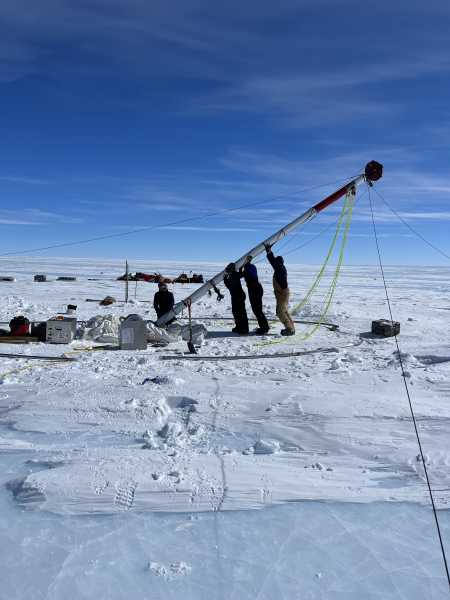
Recent research sheds light on how Pangea broke apart 135 million years ago. (Image credit: Discovery Access via Getty Images)
New evidence suggests the break between South America and Africa 135 million years ago was a turbulent event.
The breakup of the continent released more than 3.8 million cubic miles (16 million cubic kilometers) of magma, which still exists today as volcanic rock in South America, Africa, and the Atlantic Ocean seafloor. In some areas of Namibia and Angola, these volcanic layers are up to 0.6 miles (1 kilometer) thick.
A new study combining data from South America, Africa and the ocean floor shows that major magma eruptions occurred between 135 and 131 million years ago, with peak activity around 134.5 million years ago. This improved understanding of the timing of the eruptions could give researchers a clearer picture of what caused the breakup and its impact on climate.
“We see some extinctions and also climate changes” about 134.5 million years ago, said lead study author Mohamed Mansour Abdelmalak, a geologist and geophysicist at the University of Oslo in Norway. Knowing the exact age of the magma helps link eruptions to these events.
The new study also finds evidence of a “thermal anomaly” beneath what was then southern Pangea, the supercontinent that began breaking apart 200 million years ago into the modern continents. The process was gradual: South America and Africa separated 135 million years ago, while North America only completed its split from Europe 55 million years ago. Previous research had suggested that southern Pangea’s breakup was due in part to a mantle plume — an ascending column of super-hot rock from the Earth’s middle layer, the mantle. These plumes melt and thin the continental crust from below.
A new study suggests that the thermal anomaly that helped separate South America and Africa could have been caused by this mantle plume, Abdelmalak told Live Science, but the hypothesis is still controversial.
“We don't have enough samples, so we can't really tell if this volcanism is related to a mantle plume,” he added. Samples are especially needed from rocks now buried in deep waters off the coast of Argentina and Uruguay, where very little deep-sea drilling has been done, he said.
However, Abdelmalak mentioned that there is a modern example of a mantle plume driving magma eruptions in Iceland. There, the Mid-Atlantic Ridge, which is still expanding at a rate of 0.8 to 2 inches (2 to 5 centimeters) per year, is on land. That land was formed by the Icelandic hotspot, which research shows is driven by a plume that penetrates deep into the mantle.
More core samples from Africa and the deep ocean could help scientists understand how much magma erupted during the breakup between Africa and South America and how those eruptions affected the climate, Abdelmalak said. Most major eruptions result in warming climates because volcanoes release huge amounts of greenhouse gases. But there was a cooling period 134 million years ago that may have been caused by the magma erupting rapidly breaking down, or weathering. When weathering occurs, rocks break down and react chemically with the air, pulling carbon dioxide out of the atmosphere.
The results of the study were published in the May issue of the journal Earth-Science Reviews.
TOPICS plate tectonics

Stephanie PappasNavigate Social LinksLive Science Contributor
Stephanie Pappas is a freelance writer for Live Science, covering topics ranging from geological science to archaeology to the human brain and behavior. Previously a senior writer at Live Science, she is now a freelance writer in Denver, Colorado, and a regular contributor to Scientific American and The Monitor, a monthly publication of the American Psychological Association. Stephanie holds a bachelor’s degree in psychology from the University of South Carolina and a graduate certificate in science communication from the University of California, Santa Cruz.
You must verify your public display name before commenting.
Please log out and log back in. You will then be prompted to enter a display name.
Out
Sourse: www.livescience.com





